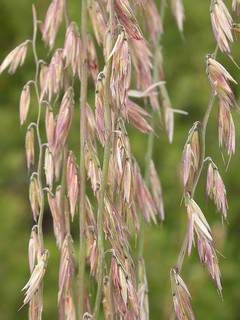As I mentioned in an earlier post, common names, although rich in lore, are not always all that helpful for uniquely identifying an organism. They also don’t reflect the evolutionary history of organisms or the relationships among them. That’s why scientists eventually devised a system they could use to communicate unambiguously.
After the concept of species was introduced by John Ray in 1686, natural scientists experimented with conventions for naming species. In 1735, Carl von Linne (aka Carolus Linnaeus), a Swedish botanist, introduced his system of binomial nomenclature for plants and animals. Binomal indicates that each organism has two names; one is the name of its genus, which it shares with other organisms in the genus, and the other is its trivial name, also called the specific name or specific epithet, which is unique to the species. The system is governed by two international bodies, one for animals and one for plants.
Latin grammar is applied to binomial names; for example, menziesii translates as “of Menzies” and is used for several species to honor Scottish botanist Archibald Menzies (about whom we will hear more soon). As this example shows, the specific name doesn’t have to describe the organism; it can name a person (typically but not always a discoverer), a location, or a real or imagined resemblance.
Although the names are formulated according to the rules of Latin grammar, they can originate in other languages. In at least one instance, Greek and Latin roots are both used in the same name: the swordfish, Xiphias gladius. Xiphias comes from the same Greek root (sword) as xiphoid, which describes the blade-shaped xiphoid process in the human body, and gladius is from the Latin word for sword. The name seems to be saying: “Did I mention that this fish has a sword?” Incidentally, you also see gladius in the word gladiator, for obvious reasons, and perhaps more surprisingly in gladiolus, because of the swordlike leaves. (So now you know what the gladiator and the gladiolus have in common.)

Last year, researchers at Duke named a genus of ferns for Lady Gaga, on the basis of various resemblances and the presence of the DNA sequence GAGA. This illustrates, among other things, the role that DNA studies play today in determining the boundaries of genera and species. The new genus contains 19 species of ferns, 17 of which were previously assigned to the genus Cheilanthes on the basis of their physical appearance. The reclassification to the genus Gaga, in contrast, is based on an analysis of their DNA. The names of the two new species, Gaga germanotta and G. monstraparva, commemorate Lady Gaga’s family name and her name for her fans (little monsters), respectively.
Note that once you’ve named the genus, you can abbreviate it (G. monstraparva). If you’re talking about an unknown species within a genus, say the genus of sunflowers, you can use, Helianthus sp., and for several species within a genus, you can say, for example, Gaga spp. Binomial names can be followed by the name of the person who first published the name (an authority) and perhaps the date of the original publication. They can also be further qualified by the name of a variety (a variant found in nature) or a cultivar (a variant developed by humans). For example, the Carnegie cultivar of the garden hyacinth is called Hyacinthus orientalis L. “Carnegie” (where the L. indicates that Linnaeus is the authority).
As I hope the examples above show, binomial nomenclature is simultaneously an elegant and precise system and a rich repository of historical information. We’ll be exploring lots of these names in this blog.
Learn more:
- Duke University press release about Gaga series of ferns
- Curiosities of Biological Nomenclature (lists various amusing or interesting scientific names; very enjoyable site to browse)